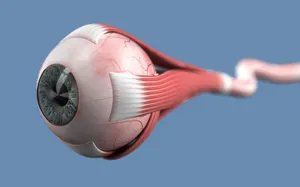Researchers are examining glycoalkaloids, a compound found in nightshade plants, as a potential treatment for cancer. Capelle.r/Getty Images
- Many cancers are treatable, particularly if caught early, but there are few treatment options for certain forms of cancer.
- The quest for new cancer treatments means that researchers look for new compounds to test that might have anti-cancer properties.
- In a recent research review, scientists examined the potential for cancer treatment in glycoalkaloids, a compound found in nightshade plants.
Cancer death rates have decreasedTrusted Source
in recent decades, but cancer cases have risen overall.
As part of the diagnostic process, sequencing cancer genomes has helped scientists uncover the pathology of cancer and identify potential ways to treat it.
Still, myriad cancer-causing mutations and mechanisms outweigh the number of known treatments, as a 2020 article in NatureTrusted Source
discussed.
To capitalize on the information we have about how different types of cancers function, more targeted treatments to improve outcomes for people diagnosed with cancer are needed.
Some of these new treatments are derived from plant compounds. One such group of compounds, known as glycoalkaloids, is found in the nightshade family and is currently the focus of considerable research.
The mechanism by which glycoalkaloids could be used to target cancer cells is the subject of a new study, which was reviewed by a group of scientists in Poland and published in Frontiers in Pharmacology.
Cancer drugs derived from plants
Researchers often look for new cancer drugs by studying compounds created by plants and fungi.
In nature, these compounds help to ward off predators since they possess a certain degree of toxicity. Many antibiotics were first discovered in fungi, for example.
Taxol (generic name: paclitaxel) is probably the most well-known plant-derived cancer treatment. Paclitaxel was derived from a compound discovered in the bark of the Pacific Yew Tree during the 1960sTrusted Source
.
First approved to treat ovarian and breast cancer by the Food and Drug Administration (FDA) in the 1990s, paclitaxelTrusted Source
is now used to treat numerous cancer types.
Today, the drug is included on the World Health Organization’s Essential MedicinesTrusted Source
, a list of the most crucial medications needed to support a basic health care system.
How glycoalkaloids target cancer cells
Glycoalkaloids have a strong inhibitory effect on cancer cell growth, which is thought to be driven by mechanisms that cause the cell to die through apoptosis.
For the present study, researchers reviewed studies that looked at the anticancer properties of plants like tomatoes and potatoes, which are found in the nightshade family. They studied the following glycoalkaloids and their extracts:
- solanine
- chaconine
- solasonine
- solamargine
- tomatine
The review highlights the range of in silico, in vitro, and in vivo studies done on the compounds.
The analysis demonstrates that glycoalkaloid compounds target numerous cellular pathways, which could be used to target specific mechanisms in cancer cells.
According to the researchers, glycoalkaloid compounds could be used in conjunction with other cancer treatments, to broaden the scope of their effectiveness.
Areas for further study in cancer research
Cancer remains one of the leading causes of death in the world and research on effective treatments is ongoing.
Despite the promising findings of glycoalkaloid compounds, the exact mechanisms by which they target and treat cancer cells are not fully understood.
The researchers thus called for more studies that could “explore new, more selective, and less toxic cancer therapies, or improve the effectiveness of applied treatment methods.”


